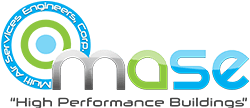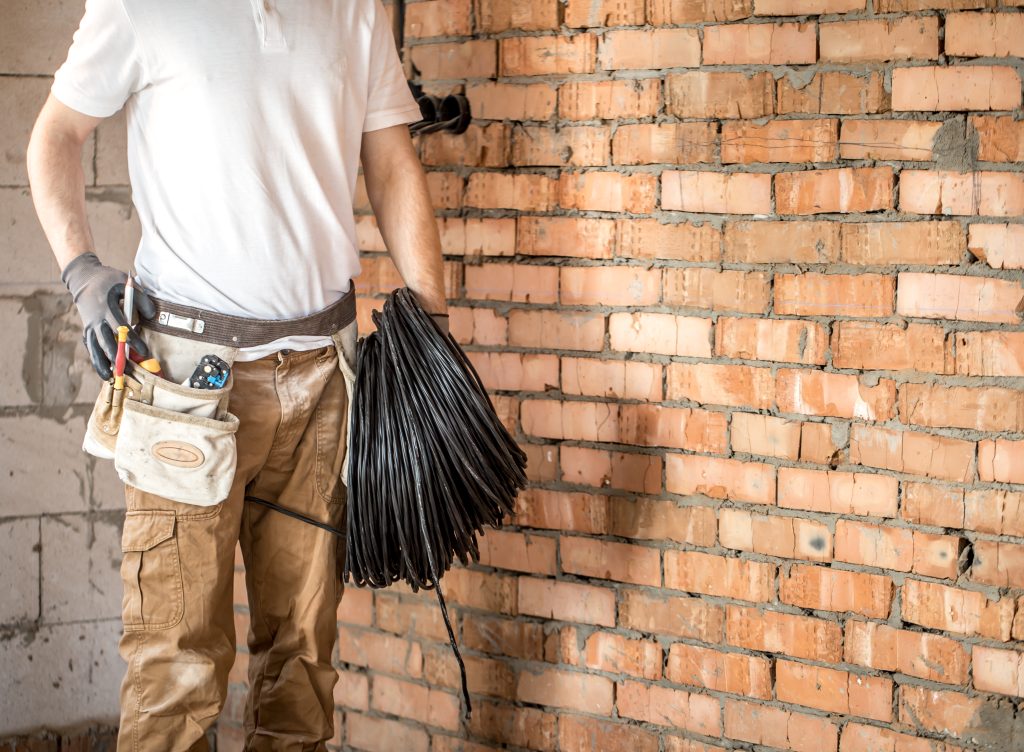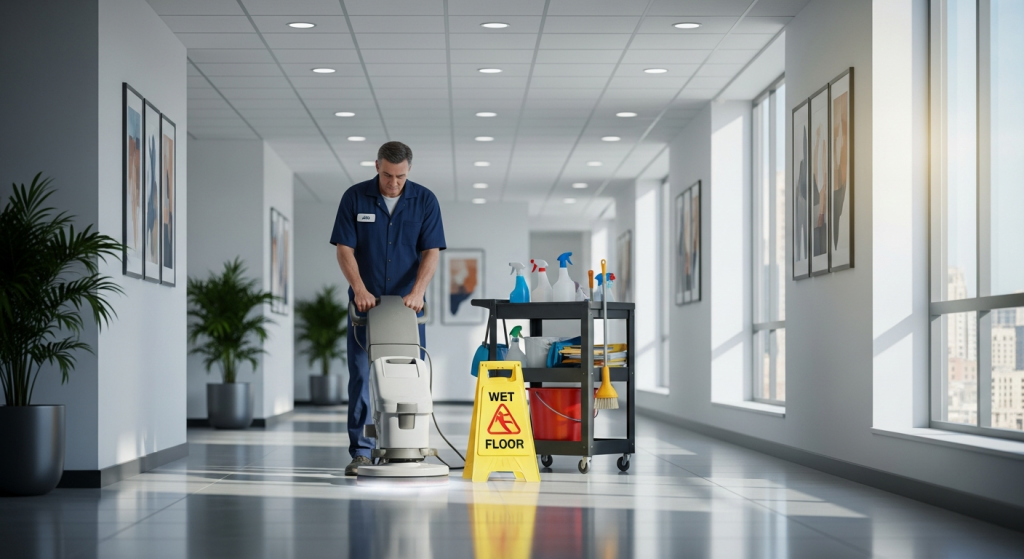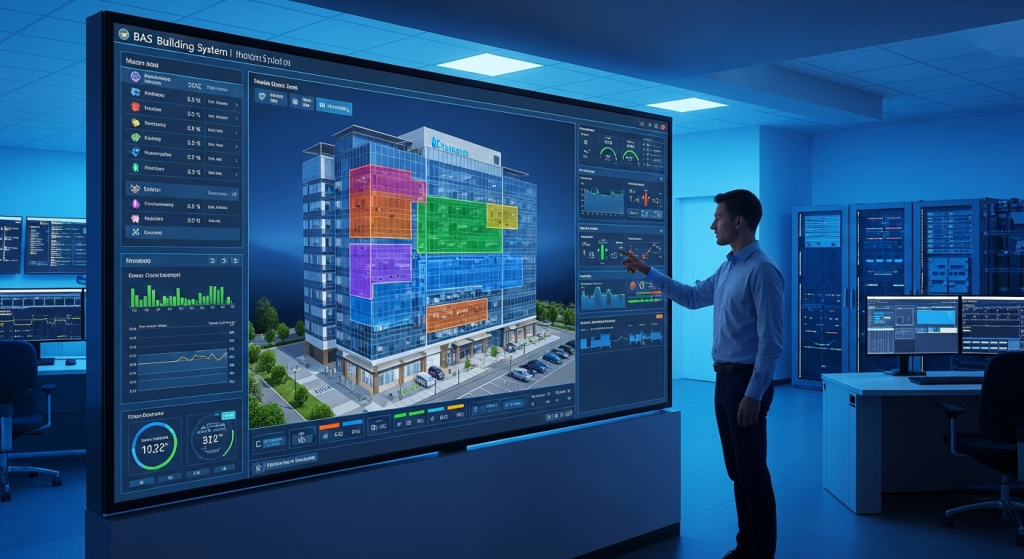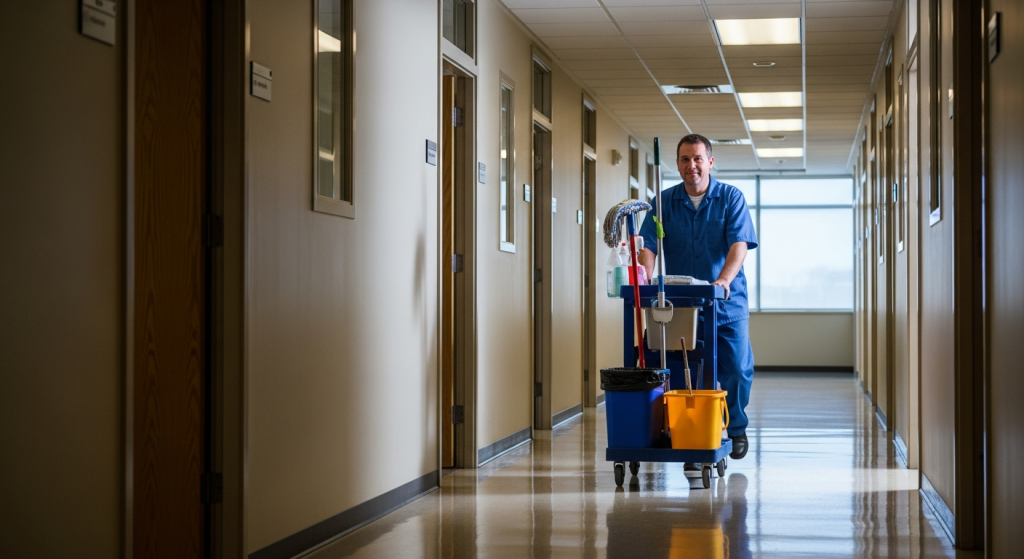For decades, facilities management services in Puerto Rico has operated on a traditional, often reactive, model. A lightbulb burns out, you replace it. An HVAC unit fails on the hottest day of August, you place an emergency call. This break-fix cycle, while familiar, is inherently inefficient, costly, and ill-suited for the demands of the modern commercial and industrial landscape. The future is no longer about simply maintaining a building; it’s about optimizing it.
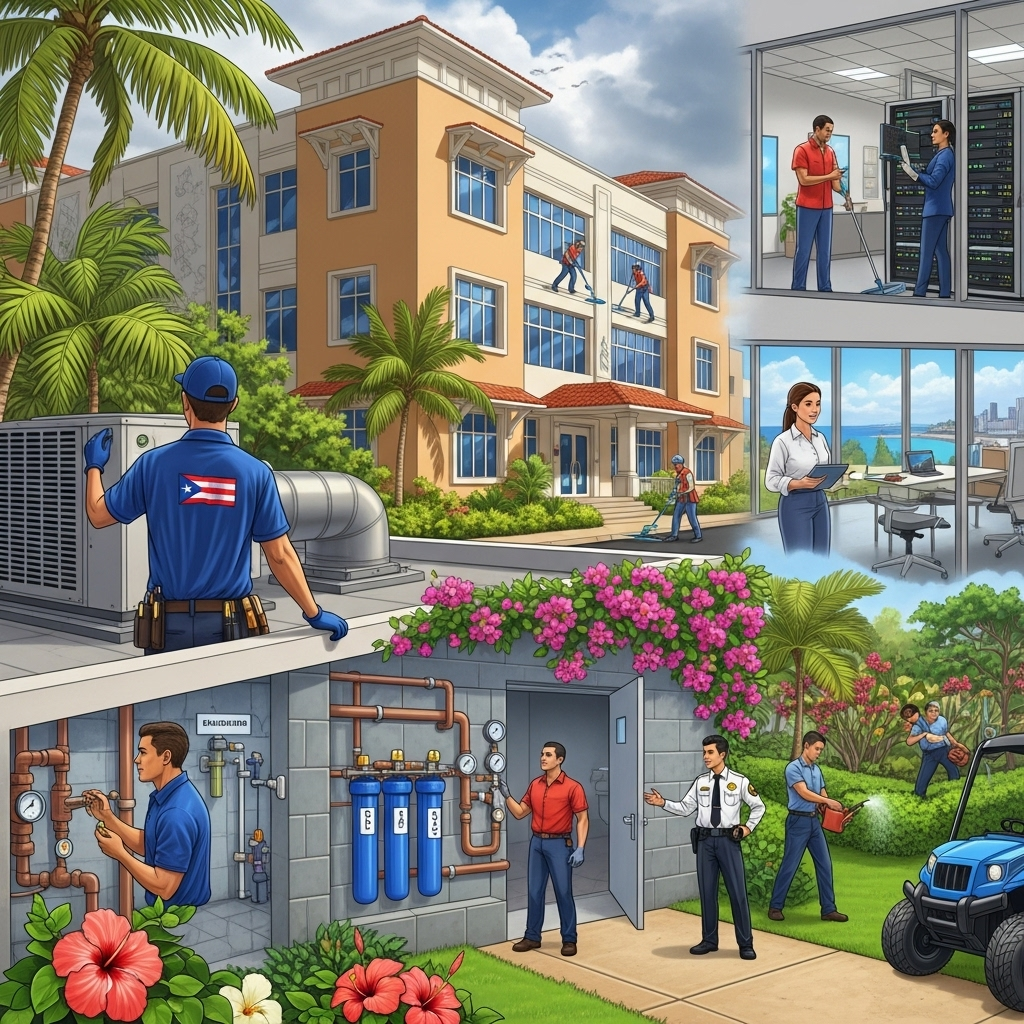
This paradigm shift is being driven by the integration of Smart Building Technology. These are not futuristic concepts from a sci-fi movie; they are practical, proven tools that are transforming buildings from passive structures into dynamic, intelligent ecosystems.
For businesses on the island, embracing this evolution is not a luxury—it is a strategic imperative for building resilience, managing costs, and gaining a significant competitive advantage.
At MASE, we are not just observers of this transformation; we are its architects. We combine decades of hands-on expertise in traditional trades with a deep understanding of cutting-edge automation and data analytics. This guide will demystify smart building technology and illustrate how our advanced facilities management services in Puerto Rico can unlock unprecedented levels of efficiency, safety, and cost savings for your organization.
What is Smart Building Technology and Why It’s Essential for Puerto Rico?
At its core, Smart Building Technology is the digital “nervous system” of your facility. It’s a network of interconnected sensors, systems, and software that work in harmony to monitor, control, and automate a building’s core functions.
Moving Beyond Traditional Maintenance: The Core of Smart Facilities Management
Traditional facilities management is based on schedules (e.g., “inspect the generator every six months”) and reactions (“the chiller is down!”). Smart facilities management, on the other hand, is proactive and data-driven. It operates on real-time information. Instead of waiting for a failure, the system analyzes performance data to predict a potential issue before it happens. Instead of running the AC at full blast in an empty conference room, the system knows the room is unoccupied and adjusts accordingly. This is the fundamental shift from reactive maintenance to intelligent optimization.
Key Components: IoT, Building Automation Systems (BAS), and Data Analytics
This intelligent ecosystem is built on three technological pillars:
- Internet of Things (IoT): This refers to the vast network of physical sensors and devices embedded throughout your facility. These are the “senses” of your building, constantly collecting data on everything from temperature and occupancy to equipment vibration and energy consumption.
- Building Automation Systems (BAS): This is the “brain” or the central command center. The BAS receives all the data from the IoT sensors and uses it to execute pre-programmed rules and automated actions—like dimming lights, adjusting chiller output, or locking doors.
- Data Analytics: This is where the “intelligence” comes in. Sophisticated software platforms analyze the massive amounts of data collected by the system. As noted by industry analysts at Gartner, this analysis is what uncovers hidden patterns, predicts maintenance needs, and provides actionable insights for continuous improvement.
The ROI of Upgrading Your Facilities Management Services in Puerto Rico
Implementing smart technology is not an expense; it is a high-return investment. The financial benefits are tangible and address some of the most significant operational costs for businesses on the island.
Slash Energy Costs with Intelligent HVAC and Lighting Control
Energy is one of the single largest operating expenses for any facility in Puerto Rico. Smart building technology offers the most effective way to combat rising energy costs.
- Intelligent HVAC: Your HVAC system can account for 40-50% of your building’s energy use. A smart BAS can optimize its performance by using occupancy sensors to adjust cooling in unused areas, analyzing weather forecasts to pre-cool the building during off-peak hours, and monitoring system performance to ensure it’s running at peak efficiency. According to the U.S. Department of Energy, these strategies can lead to energy savings of 10-30%.
- Smart Lighting: Automated lighting systems use sensors and schedules to ensure lights are off in unoccupied areas. “Daylight harvesting” sensors can automatically dim indoor lights when sufficient natural light is available.
Predictive Maintenance: Reduce Downtime for Critical Equipment
For manufacturers, pharmaceutical companies, and data centers, unplanned equipment downtime is catastrophic, costing thousands of dollars per minute. Smart facilities management shifts the paradigm from preventative maintenance (fixing things on a schedule) to predictive maintenance (fixing things right before they are about to break). IoT sensors can monitor the vibration, temperature, and energy draw of a critical motor or chiller. The analytics platform can detect subtle changes in these patterns that indicate an impending failure, allowing your team to schedule maintenance proactively, during planned downtime, and before a catastrophic and costly failure occurs.
Enhance Security and Safety with Integrated Surveillance and Access Control
A smart building integrates its security systems into a single, cohesive platform. Your access control, video surveillance (CCTV), and alarm systems “talk” to each other. For example, if an unauthorized access attempt is detected at a sensitive door after hours, the BAS can automatically lock down other access points, focus multiple cameras on the area, illuminate the corridor, and send a real-time alert with video footage to security personnel. This automated, intelligent response is faster and more effective than any manual process.
How Smart Building Technology Solves Challenges Unique to Puerto Rico
The benefits of smart buildings are universal, but they are uniquely powerful for addressing the specific operational challenges faced by businesses in Puerto Rico.
Building Resilience Against Power Grid Instability and Hurricanes
The fragility of the island’s power grid is a constant concern. A smart building is a resilient building. A BAS can be programmed to manage your power infrastructure intelligently. In the event of a power outage, the system can:
- Automatically start backup generators and manage the transition of power.
- Intelligently shed non-critical loads to prolong the life of your UPS (Uninterruptible Power Supply) and generator fuel.
- Monitor fuel levels and generator performance, sending alerts when intervention is needed.
This creates a robust layer of business continuity that protects your operations, data, and critical equipment during emergencies.
Optimizing Operations for Key Industries: Pharma, Manufacturing, and Hospitality
MASE understands that different industries have different priorities.
- For the Pharmaceutical and Manufacturing sectors, a BAS is critical for maintaining strict environmental controls (temperature, humidity, air pressure) required for cGMP compliance. The system provides an immutable data log, proving that conditions were always within specified parameters.
- For the Hospitality industry, smart systems dramatically enhance the guest experience. A BAS can integrate with the hotel’s reservation system to pre-cool a room just before guest check-in. It allows for centralized control of lighting and HVAC across the entire property, ensuring comfort while minimizing energy waste in unoccupied rooms.
MASE: Your Partner for Advanced Facilities Management Services in Puerto Rico
Implementing smart building technology is not a DIY project. It requires a partner with a rare and valuable combination of skills: deep expertise in traditional building systems (HVAC, electrical) and a sophisticated understanding of modern automation and IT infrastructure.
Our Integrated Approach: Combining Expertise with Technology
This is the core of the MASE difference. We are one of the few providers in Puerto Rico that has master technicians, certified engineers, and IT specialists all under one roof. We don’t just install sensors; we understand what the data means. We don’t just program a BAS; we understand how it needs to control the complex mechanical and electrical systems of your building. This integrated, holistic approach ensures that your smart building solution is not just technologically advanced, but also practical, reliable, and perfectly aligned with your business goals.
Request a Consultation to Evaluate Your Building’s Smart Technology Potential
The future of facilities management is already here. It’s intelligent, it’s proactive, and it’s profoundly more efficient. The question is whether your business is ready to leverage it.
